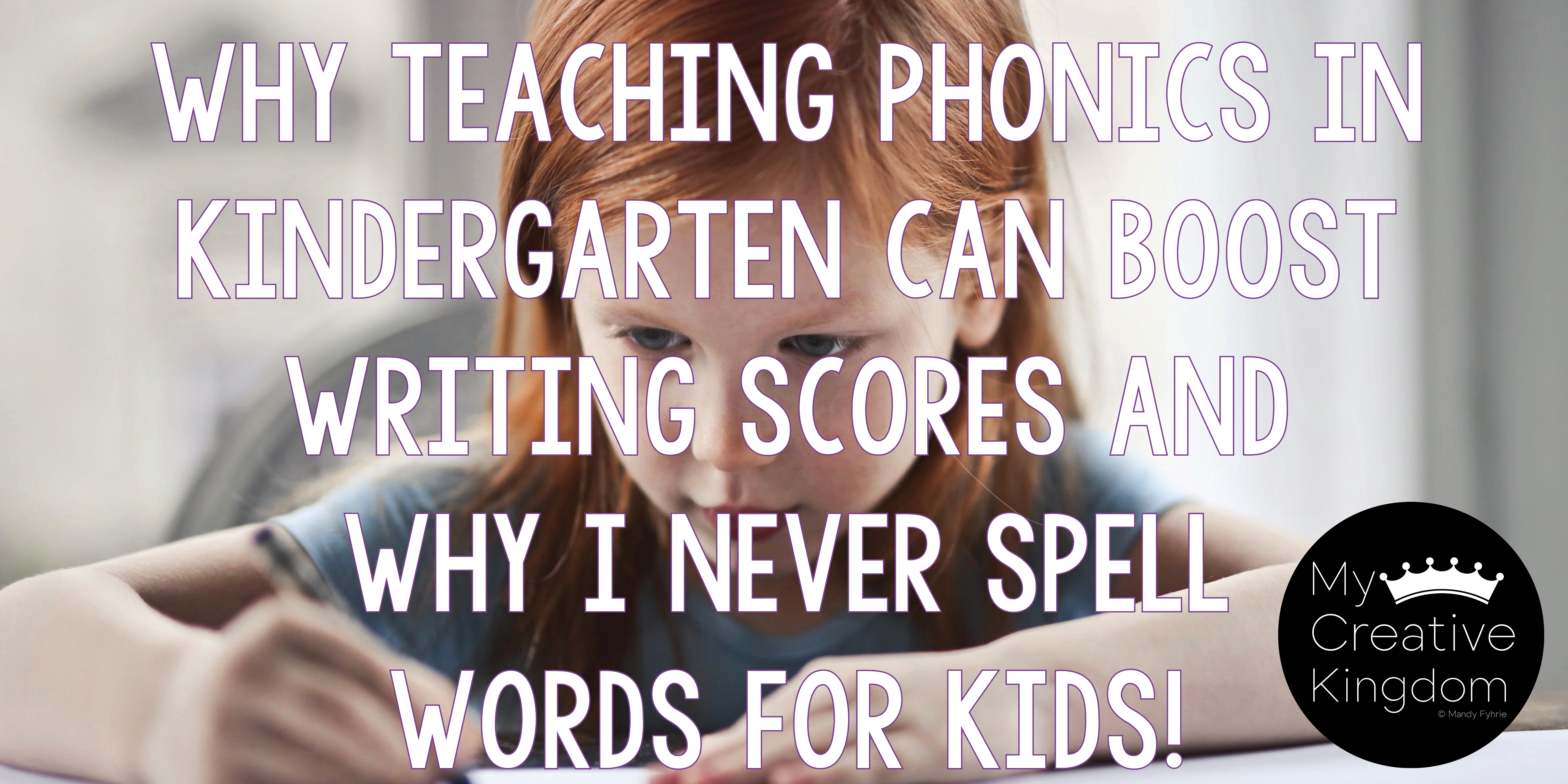Phonics is an essential skill to learning to write and understand the written and spoken language. Afterall, learning to read and write in kindergarten starts with understanding the symbol-sound relationship of letters to individual phonemes. I would argue that teaching phonics is the most important skill in teaching kindergartners to read and write. Phonics teaches children how our language system works and how they can manipulate symbols and sounds to make words. It’s no wonder, then, how writing scores can increase based on students understanding of phonemic awareness and application.
Teaching phonics takes intentionality. Everyone has a part of their day that is non-negotiable. Mine is phonics. When you practice substituting initial letter sounds or rhyming ending sounds to make new words, children start to understand this relationship. The important aspect of teaching phonics is also teaching children to play with language and take risks. This means sounding out words phonetically is most important when starting out. For example, “park,” might be spelled, “prk.” This is amazing! It has a first, middle and ending sound. It also means this student understands the phonemic relationship between letters and sounds! This is what we want in kindergarten.
The further children progress in phonics, the more you can introduce. For example, digraphs, such as “ch, sh, wh.” You may notice that as kindergartener’s confidence grows in phonemic awareness their sentences become long and run-ons. They go from the predictable sentence structure (I like cats) to something more complicated (I like cats and dogs and brds and sqrls). This is okay and is part of the teaching process. This is called listing. You can point this out and continue to add to their writing tool box by addressing punctuation. The hardest part with kids is teaching them to experiment with writing and give them confidence that they are capable of writing on their own (without telling them how to spell). I NEVER TELL KIDS HOW TO SPELL A WORD! NEVER! Not in kindergarten, anyway. This stifles the fun of writing and makes it stressful. Kids will always worry about whether they are spelling a word correctly. When the time comes, you can teach kids to how to use resources to find words they want to spell (books, dictionary, word walls, etc.) But, if you just tell them, they feel like they don’t have the power to write but need you to write for them. Trust the process. If you don’t understand a word they spelled, ask them to read it to you. That usually clears up the spelling you don’t understand, or it gives you insights into how their speech and language is formed. For example, kids with speech services often use different phonemes for words that don’t seem to match –but they are spelling it how they hear they are saying it. This doesn’t mean the gap is in their writing ability, but rather that by addressing how they speak, will address their writing. Don’t address it in their writing. Address it by reading back their writing, paraphrasing and helping them to understand and practice speech sounds. Speak slowly and clearly.
